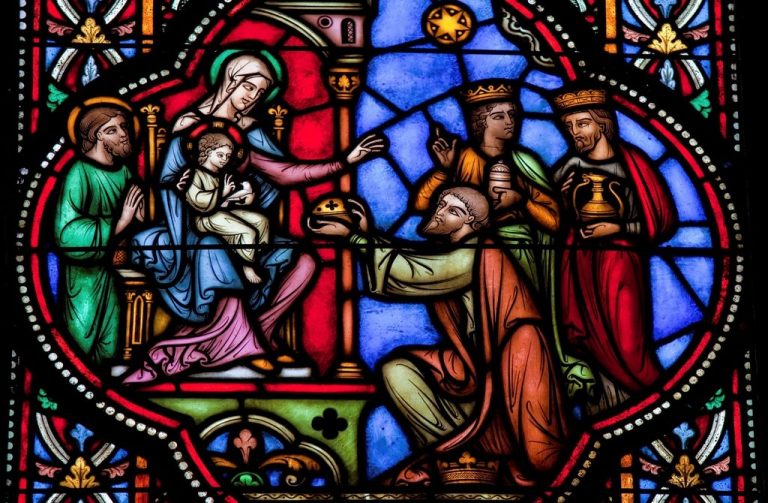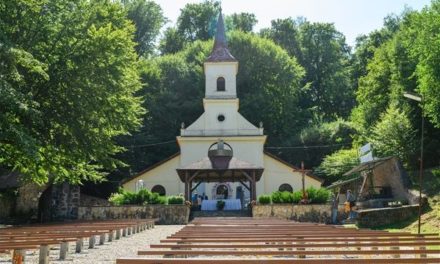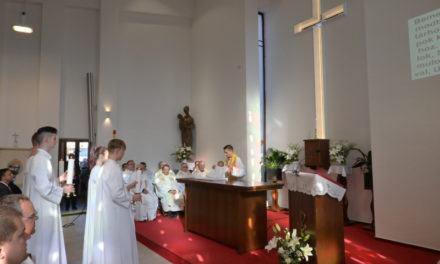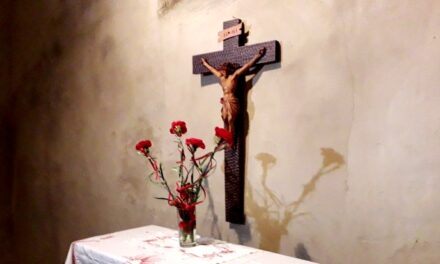The final day of the Christmas holiday cycle is Epiphany on January 6, which is one of the most overcrowded days of the year with holidays and is also the oldest Christian holiday. It is also known as Epiphany (Epiphania Domini, i.e. the appearance of our Lord), which connects the moments of the appearance and manifestation of Jesus Christ. According to the Gospel report, it is connected to three events.
The first, which is also known as the Feast of the Three Kings, is the visit of the wise men from the east to the baby Jesus guided by the star of Bethlehem (Mt. 2, 1-12). This is why the most important motif of the "Three Kings Walk" was the star and its star. "Oh, how bright is this star that is attacking you today, its faithful light shines through the world, it dispels the darkness of the pagans." (Népénektár 58, Catholic hymnbook 508.)
Guided by the star of Bethlehem, the wise men came from the east to Judea to pay their respects to the newborn baby Jesus: they presented gold to the King, incense to God and myrrh to Man. The Gospel calls them magicians, but does not mention their names. According to tradition, there were three of them, Beda Venerabilis, who lived in the 8th century, also mentions their names: Caspar, Melchior, Balthasar, i.e. Gáspár, Menyhért, Boldizsár.
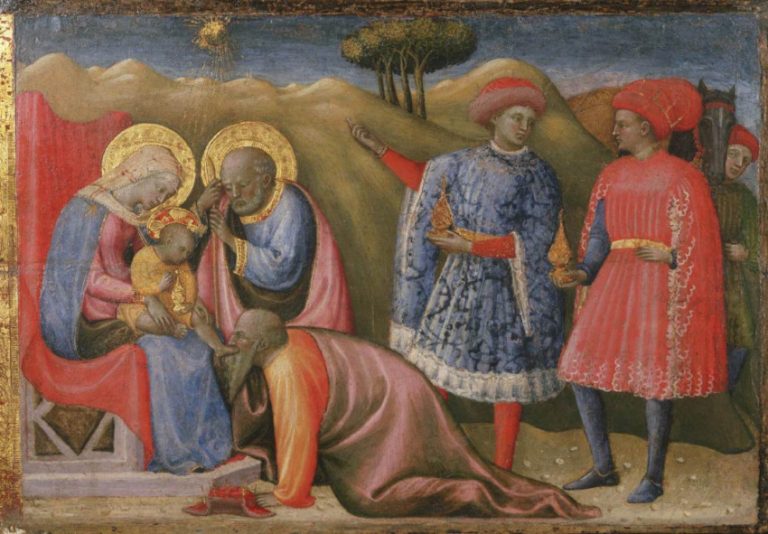
Paolo Schiavo: Adoration of the Wise (1428-33) Photo: Wikipedia
The second Gospel meaning is none other than the baptism of Jesus in the waters of the Jordan. The Holy Spirit descended on him in the form of a white dove, through which the entire Holy Trinity revealed itself to humanity. (Mt. 3, 13-17). This is what water baptism refers to, that is, the water consecration ceremony. As part of the Holy Mass, the spiritual father consecrates the salt, which he mixes with the water, and then the water is baptized, that is, blessed. In many places, myrrh is consecrated on this day. At this time, the priest prays for God's powerful power for the sacraments, which will be used in the coming year.
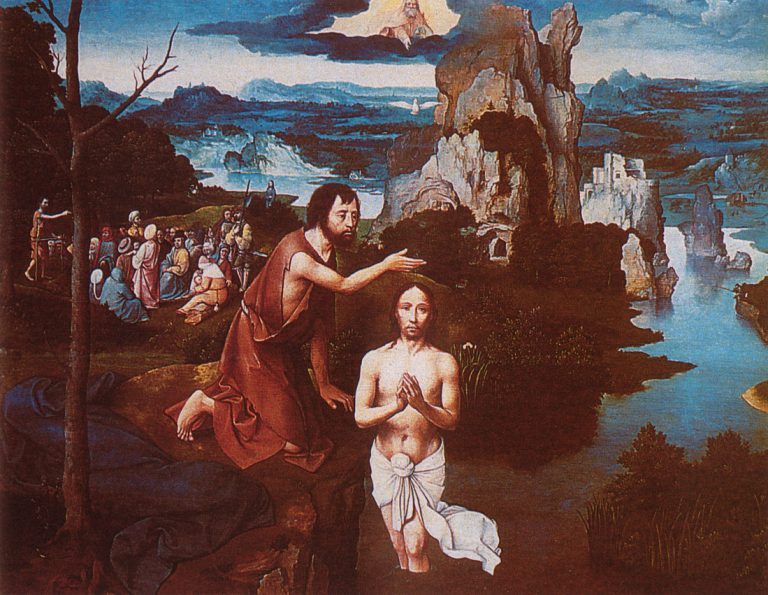
Joachim Patinir: The Baptism of Jesus (1515-18) Photo: Wikipedia
The third Gospel meaning of the holiday is Jesus' first miracle, which happened at the wedding in Cana, when he turned water into wine. This was the first time he had manifested his divine power. It reminds not only of the consecration of water, but also of the house consecration ceremony, because the house in Cana was blessed and sanctified by the presence of Jesus. (John 2:1-12).
This day marks the beginning of the period of house consecrations, which began in the 19th century. before it was a liturgy practiced throughout the country. This custom is practiced in several places throughout the Carpathian Basin, mainly in Transylvania, but also in the motherland and the Highlands. In this case, by invoking the holy name of Jesus Christ, the priest asks for protection against any attack that may affect the house, its inhabitants, and its movables, and sprinkles them with holy water during the consecration prayer.
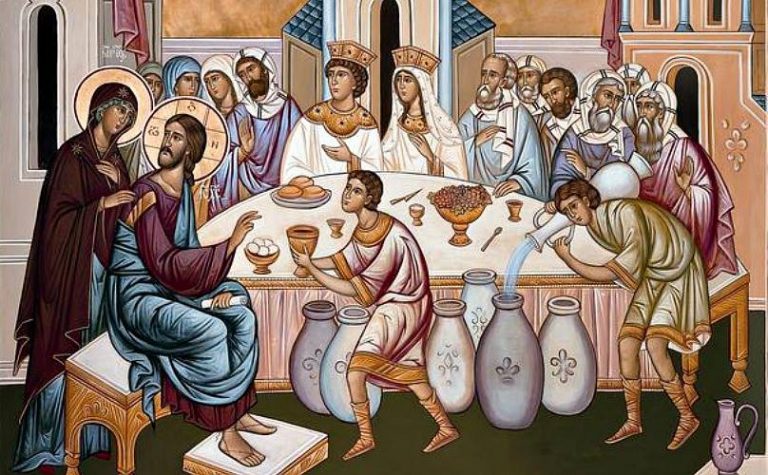
Cana wedding, icon Photo: Wikipedia
According to custom, after the house dedication, the year is written on the door and, according to popular interpretation, the initials of the names of the Three Kings (Gáspár, Menyhért, Boldizsár), this year: 20 + G + M + B + 23. According to the original interpretation, the three letters are the Latin initials of the blessing formula: Christus Mansionem Benedicat, meaning "Christ bless this house".
The faithful can also take the holy water to their homes, which they can use during the year. This was also the case in the time of our fathers, when leaving and entering the house, they sprinkled themselves with holy water from the holy water tank kept on the door jamb or on the wall next to the door. But they sprinkled on the animals, farm buildings, yard, crops, people, the cradle and the coffin. The sick and infirm drank from it, but it was mainly used against the temptations of evil.
The twelve days from Christmas to Epiphany are also known as fortune telling days for the New Year's weather. In wine-growing regions, the overflowing eaves promised a rich wine harvest. If it didn't happen, the flooded eaves on St. Vincent's Day could make up for it. The "twelfth of Christmas" ends on January 6 and the carnival begins. This period used to be the time of fun, joy and rest, which, following the rhythm of nature, lasted until the arrival of border works and Ash Wednesday.

Astrology, folk dramatic game Photo: Wikipedia
Another great tradition of festive folk customs was the star walk or three-kings walk, which is still alive today in some regions of Transylvania. Then, in his dramatic play, the figures personifying the biblical kings, who are personified by children, following the example of the nativity scene, appear. The main prop was the star that showed the way to Bethlehem.
Their characteristic piece of clothing is the decorative paper bottle. The star play or dialogue water play is sometimes performed by girls when they sing the star song:
"Oh, how bright is the star that attacks today, its
calling light shines through the world,
dispels the darkness of the pagans!
Seeing the light, the three wise men set out
and find the true Light: the little Child,
who will one day gather all the peoples.
Author: Kornélia Berényi/Felvidék.ma

